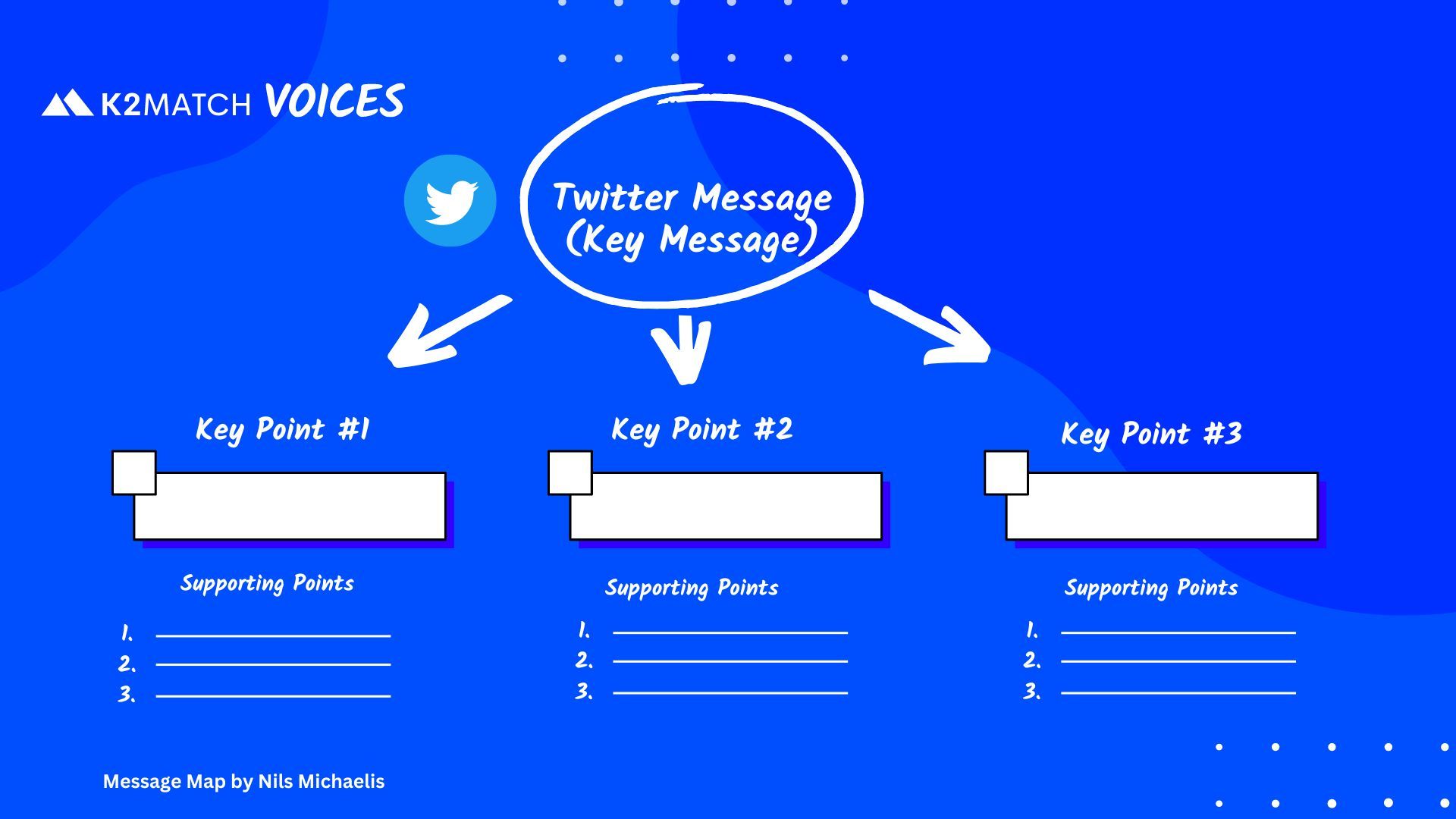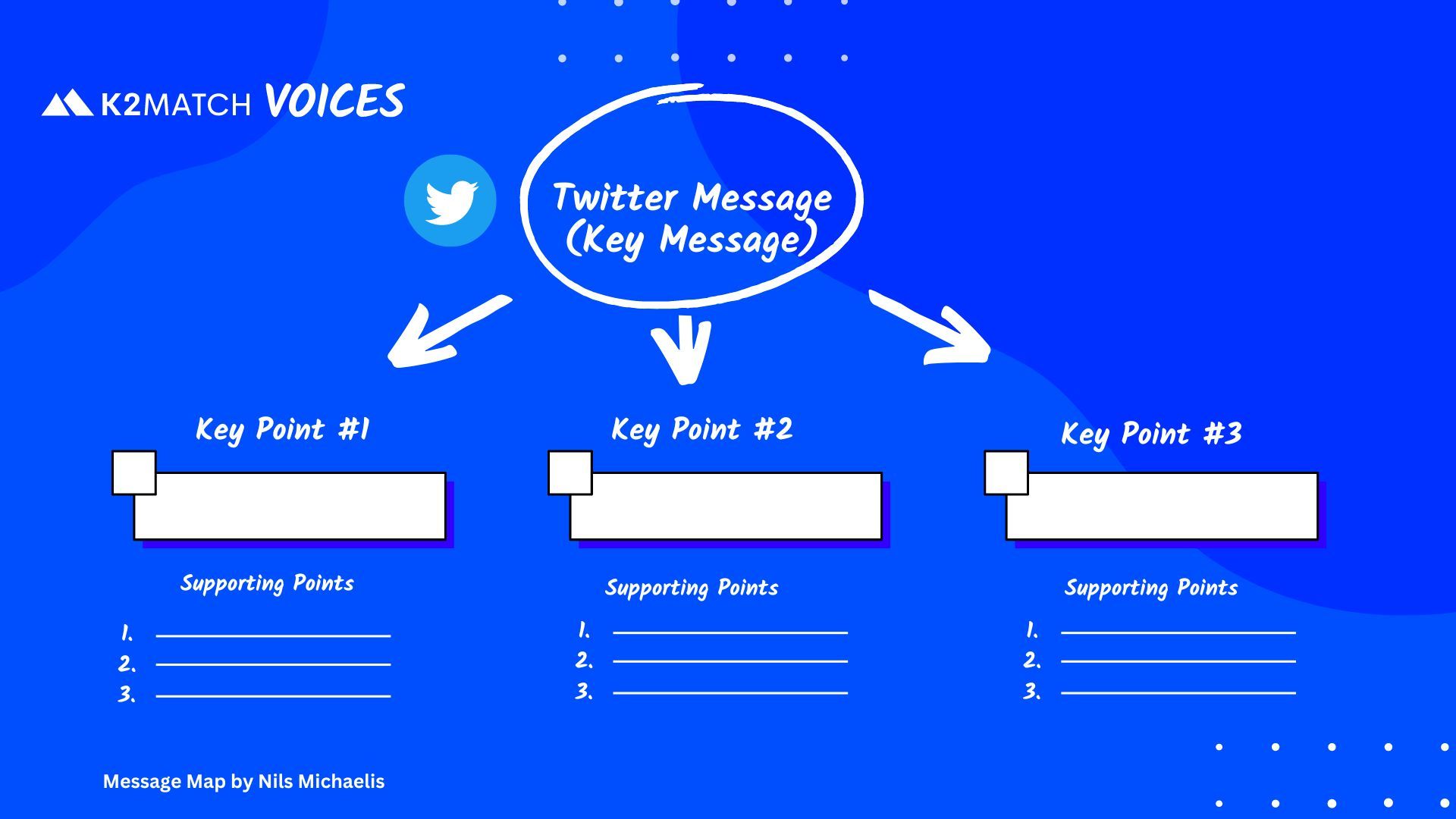Communicate with confidence!

(Consider these 5 steps)
Products are getting more exciting, PowerPoint presentations more spectacular and the formats for said presentation more extensive. But one component never changes and that is you. In a fast-paced world where contacts are becoming more indifferent and meetings more digital, it's the human component that makes all the difference. You, yourself, are why someone cares about you; about your ideas, products and innovations. That's why it's important that you pay attention to the following five points for a persuasive presentation: structure, your mindset, body language, speaking style and your connection to your audience.
Step 1: Structure
What do you want to achieve? What is the core message you want your audience to remember? Your starting point should always be your goal, not your presentation. A core message is memorable, concisely stated, and insightful. Such a goal is the starting point for your structure. Next, use a message map (Fig. 1) to define your most important key messages that support your goal. Here you write down all the important arguments, examples or facts that support each message. Now you have an overview of the most important elements that support your core message. Now you can start to create supporting materials, such as a pitch deck. Furthermore, it is important to think about who will be listening to you.
The more you know about your audience, the better you can personalize your message. So, during any preparation, ask yourself questions like:
- Who is my audience?
- What experiences do we have in common?
- What is the audience's motivation?
- What is important to these people?
- How familiar is the audience with the content?
- Etc.

The more personalized your speech, the more your audience will identify with it and connect to you and your message.
Step 2: Your mindset
Passion is contagious - it's that simple! You can only inspire others if you are inspired yourself. You have a greater chance of persuading and engaging your audience if you express an enthusiastic, passionate and meaningful connection to your topic. Passion is reflected throughout your performance, in your body language as well as in the way you speak. In every language, on every continent, in every country, it is those speakers who sincerely express their passion and enthusiasm for their subject who stand out as inspirational leaders. They are the ones customers want to do business with. So do not think so much about what is authentic and what is not, but rather think about what is best for the current situation. Because your mindset will produce the right result (Fig. 2). Thanks to the right attitude, the first impression is also easier to "win for yourself".
“I think”
“I search”
“I find”

Who does not know the saying "there is no second chance for the first impression"? Whether it's true or not, the halo effect suggests that you should make the most positive first impression possible. The halo effect is a systematic error in the assessment of a person, in which a single characteristic of a person appears so dominant that other characteristics are very much pushed into the background or not considered at all in the assessment of this person. Furthermore, based on the selected characteristic, other characteristics of that person are inferred, without there being any objective basis for this. For you, it means that if you make a positive first impression, everything you say afterwards will be perceived in a positive way. Your body language will help you make that first impression.
Step 3: Body language
Your face is an essential ingredient for making the perfect first impression. People seek attention and recognition; we want to belong. You can convey this sense of belonging by raising your eyebrows quickly and briefly. Experiments have shown that raising the eyebrows is a universally recognized gesture of recognition. So, make it a practice to consciously use eyebrow flashes. The second step in making a positive first impression is through a friendly, teeth-showing smile. This should be practiced so that your smile comes across as genuine. A smile signals "friend" to the limbic system and that there is no danger posed by you. This way, you signal recognition and goodwill to your counterpart within the first few seconds. Once the first impression is "won", your body language plays the most important aspect of your communication. Body language is the oldest aspect of how we communicate; it is older than the spoken word. On the basis of body language, our subconscious judges competence, credibility, charisma and much more. Important for your communication are above all your stance, your movements and your hand gestures.
It is important to avoid unsteady movements. They detract from your content and are interpreted as nervous or even incompetent. You can achieve a secure and self-confident stance by standing firmly and shoulder-width apart on both legs. (Important: Observe yourself in a mirror.) Such a stance conveys self-confidence and prevents unnecessary movements. In order to move confidently on stage, for example, you should keep two things in mind. First, move only on specific occasions. In this way, you will avoid restless pacing. Secondly, make sure you take full steps, placing the second leg next to the first. This way you avoid a posture that makes you look unbalanced and wobbly. Finally, open and inviting hand gestures are important for persuasive communication.
An open posture is not only animating and inviting, experiments have even shown that open palms make the speaker feel more trustworthy and help the listeners remember what was said. Use hand gestures deliberately and show your palms. Such use of gestures builds confidence. Almost as important as body language is the way something is being said.
Step 4: Speaking style
Most people talk way too fast. The fatal thing here is that I, as the listener, do not have a chance to process all the new information properly. At the same time, the high tempo often results in the speaker not being able to think ahead fast enough. The result: filler words creep in, sentences become longer and convoluted, while your message is diluted. Use pauses to give your listener time to process the information. At the same time, the high tempo often means that you as the speaker can't "think ahead" fast enough. The result: filler words creep in, the sentences become longer and more convoluted, your message is diluted. Use pauses to give your listener time to process the information you have just heard. Use pauses to emphasize your point while thinking about the next sentence. Use pauses to avoid filler words and monotony.
A fast-paced, long sentence often causes your voice to go up at the end of the sentence, signaling your brain to "keep talking"; a vicious cycle. Filler words creep in once again and listening becomes more stressful as a repeated raising of your voice is strenuous for the listener. Learn to consciously lower your voice at the end of the sentence and literally get to the point. This way you avoid filler words like um, like, such and more. Once you have mastered body language and your speaking style, you can fully focus on how you rhetorically convey your content.
Step 5: What & How
Among other things, rhetorical devices help you to be perceived as more charismatic. In my opinion, the most important thing you need to do is connecting heart and mind of your listeners. While people like to be believe to be rational beings, decisions are made based on logic and emotion alike. This is where the time-tested stylistic device 'storytelling' comes in handy. Storytelling helps you to make your information tangible on different levels and senses. The better your listeners can empathize with what you say, the better they will retain the information. The key word here is "feel", because emotions help to translate information from short-term to long-term memory. Last but not least, be aware that
everyone listening to you is asking themselves, "What's in it for me?" Help your listeners build that bridge and consciously answer the question of their personal benefit.
Take these five steps to heart and you will become a persuasive communicator!
The Article was provided by Nils Michaelis

